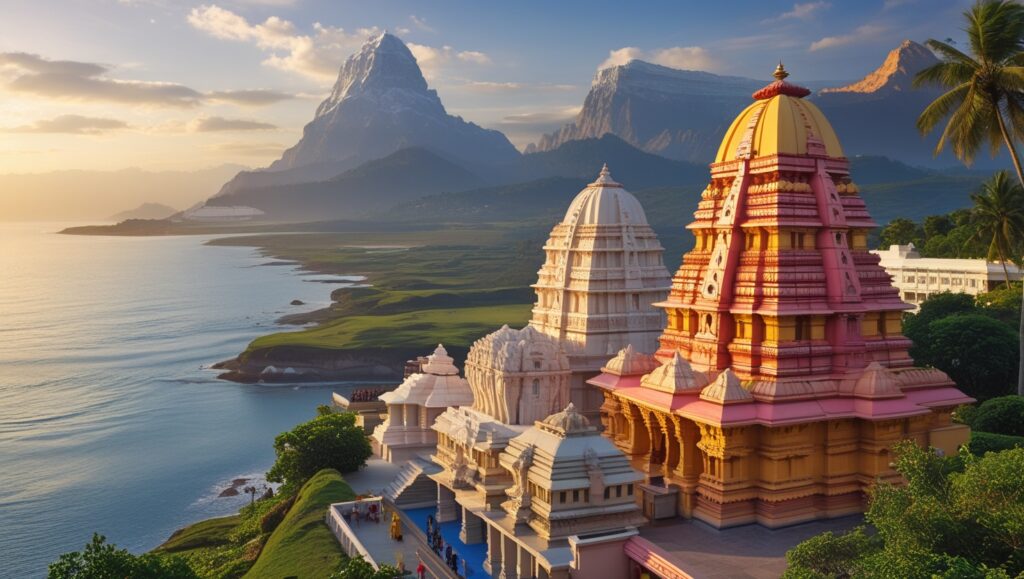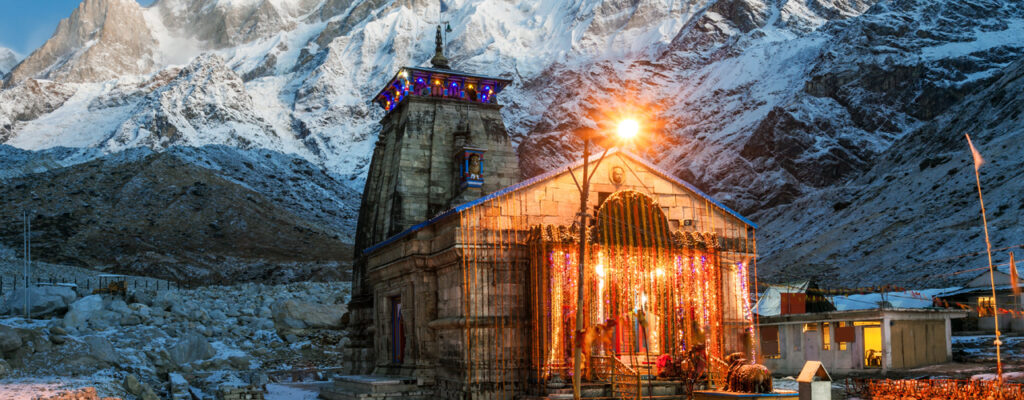Discover the spiritual significance and history of Char Dham, the four sacred Hindu pilgrimage sites. Learn about Adi Shankaracharya’s role and the mythological stories behind these holy destinations.
What is the Story Behind Char Dham?
Char Dham, meaning “Four Abodes,” refers to four sacred Hindu pilgrimage sites located in different corners of India—Badrinath (North), Dwarka (West), Puri (East), and Rameswaram (South). These sites hold immense spiritual significance and are believed to provide salvation (moksha) to devotees. The concept of Char Dham was established by the great 8th-century philosopher and saint, Adi Shankaracharya, who sought to unify Hinduism and revive its spiritual essence across the country.
The Spiritual Significance of Char Dham
Each of the Char Dham sites is dedicated to a different deity and carries its own mythological significance:
- Badrinath (Uttarakhand – North)
Dedicated to Lord Vishnu, Badrinath is believed to be the place where the deity meditated after being rebuked by Sage Narada. It is situated in the Himalayas, along the banks of the Alaknanda River. - Dwarka (Gujarat – West)
The ancient city of Dwarka is associated with Lord Krishna, who is believed to have established his kingdom here. The Dwarkadhish Temple, dedicated to him, stands as a major spiritual attraction. - Puri (Odisha – East)
The Jagannath Temple in Puri is home to Lord Jagannath, an incarnation of Lord Vishnu. The famous Rath Yatra (chariot festival) takes place here, attracting millions of devotees annually. - Rameswaram (Tamil Nadu – South)
Rameswaram is connected to Lord Rama, who is said to have built a bridge (Ram Setu) to Lanka from here. The Ramanathaswamy Temple, dedicated to Lord Shiva, holds immense religious significance.
Adi Shankaracharya’s Role in Establishing Char Dham
Adi Shankaracharya, a revered Hindu philosopher, played a key role in establishing Char Dham as sacred pilgrimage sites. He traveled across India to revive Vedic traditions and unify different sects of Hinduism. By designating these four locations, he aimed to create a pilgrimage circuit that would spiritually connect people from all corners of the country.
It is believed that visiting all four dhams in one’s lifetime helps in attaining liberation from the cycle of birth and death.
Char Dham Yatra: The Journey to Spiritual Awakening
Embarking on the Char Dham Yatra is considered a divine journey. Many devotees undertake this pilgrimage seeking spiritual purification and blessings from the deities. The journey can be physically demanding but is deeply fulfilling, as it involves visiting ancient temples, experiencing sacred rituals, and connecting with India’s rich spiritual heritage.
FAQ About Char Dham
1. What is the difference between Char Dham and Chota Char Dham?
Char Dham refers to the four pilgrimage sites established by Adi Shankaracharya across India, while Chota Char Dham consists of four shrines in Uttarakhand—Badrinath, Kedarnath, Gangotri, and Yamunotri.
2. Can Char Dham Yatra be completed in one trip?
Yes, but it requires extensive travel as the four sites are located in different parts of India. Many devotees prefer to visit them over multiple trips.
3. What is the best time to visit Char Dham?
The best time to visit depends on the location. Generally, the yatra is ideal between April and June and from September to November, avoiding monsoons and extreme winters.
4. Is Char Dham Yatra mandatory for Hindus?
While not mandatory, visiting Char Dham is highly recommended for spiritual growth and attaining moksha.
5. How long does it take to complete the Char Dham Yatra?
It depends on the mode of travel, but it may take 2–3 weeks to visit all four dhams.





